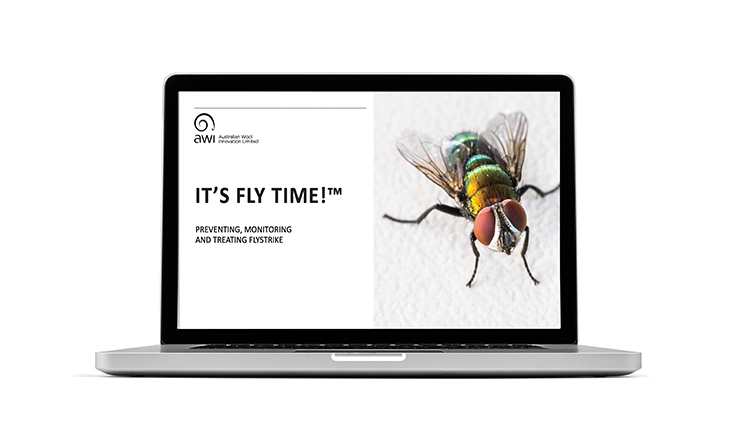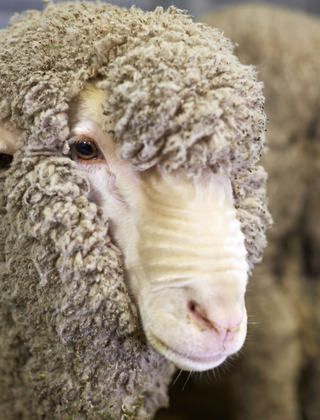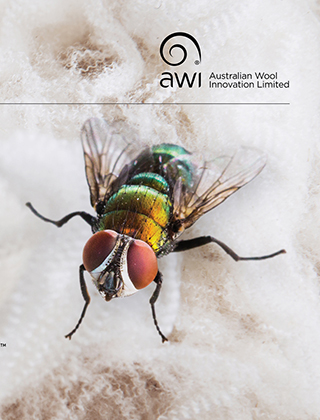It’s Fly Time! webinar is back

Winter rains across many of Australia’s sheep regions herald a potentially bad flystrike season. In response, AWI held a repeat of its popular It’s Fly Time! webinar in early September, providing flystrike advice to woolgrowers managing under high-risk fly conditions. A recording of the webinar and related resources are available to view for all woolgrowers across the country.
If you missed AWI’s It’s Fly Time! webinar, it’s being held again later in the year, or you can watch a free recording on the AWI website now.
Winter rains across many of Australia’s sheep regions herald a potentially bad flystrike season. In response, AWI held a repeat of its popular It’s Fly Time! webinar in early September, providing flystrike advice to woolgrowers managing under high-risk fly conditions. A recording of the webinar and related resources are available to view for all woolgrowers across the country.
Following a wet winter, many parts of Australia have entered a high-risk flystrike period, with some woolgrowers already reporting cases of flystrike in their flocks. To provide woolgrowers with timely advice, AWI recently held a repeat of the successful It’s Fly Time! webinar, first held in January this year.
Aggregating information on flystrike from a range of sources, the It’s Fly Time! package is designed to deliver tactical information to woolgrowers in preparation for, and responding to, a high-risk flystrike period. It provides woolgrowers with tips for preventing flystrike, information on prioritising sheep for monitoring and treatment, and options for treating sheep when flystrike does occur.
If you missed the webinar, a repeat performance is planned for later in the year and a recording of the original webinar is available to view at www.wool.com/flystrikeresources, split into three sections: Prevention, Monitoring, Treatment, along with the following additional supporting resources:
- The webinar’s 77 slides and notes (available in PowerPoint or PDF)
- Factsheets including ‘Recognising and monitoring flystrike’ (3-pages) and ‘Preventing and treating flystrike’ (5-pages).
- Three ‘quick tip’ videos (under four minutes each) focussed on prevention, monitoring and treatment of flystrike.
Woolgrowers without access to the website can be sent hard copies by contacting the AWI Helpline on 1800 070 099.
“The flystrike prevention, monitoring and treatment activities highlighted in the It’s Fly time! webinar all play key roles in woolgrowers’ integrated flystrike management plans,” said AWI’s General Manager of Research Dr Jane Littlejohn. “The webinar provides a timely and practical guide to flystrike management in preparation for what looks like another bad fly season this year.”
SimpliFly workshop in development
AWI is also repackaging available information on best practice flystrike management into a one-day workshop, known as SimpliFly, to help woolgrowers review their own holistic integrated flystrike management plan specific to their property.
Woolgrower feedback from planned pilot workshops will contribute to the final workshop resources, although unfortunately, the COVID-19 outbreak has meant that they have had to be delayed into next year. Once the resources are complete, train the trainer sessions will be held for advisors nationwide before the workshops are then made available to woolgrowers.
The one-day workshop involves an interactive program where participants will explore the many short- and long-term flystrike management tools and strategies available to them to help combat flystrike. They will also work through practical activities that enable them to combine these strategies and tools on their own property according to a customised annual flystrike management plan that best suits their specific circumstances.
Dr Littlejohn says the workshops have been developed to give woolgrowers easy access to the information and support they need to effectively manage flystrike on their property.
“Being proactive and planning how to combat flystrike on an annual basis will help woolgrowers stay ahead of fly waves, delivering a better animal health and welfare outcome and saving them time, money and production losses,” she said.
It is intended that the workshops will be run by the AWI grower extension networks and made available for accredited advisors to deliver.
More information:
For resources on flystrike prevention, monitoring and treatment, head to www.wool.com/flystrikeresources.
For more detailed information on flystrike management, including information on chemical resistance management strategies and access to interactive decision support tools, visit FlyBoss at www.flyboss.com.au.
For information on AWI’s flystrike research, development and extension program, visit www.wool.com/flystrike.
This article appeared in the September 2021 edition of AWI’s Beyond the Bale magazine. Reproduction of the article is encouraged, however prior permission must be obtained from the Editor.















